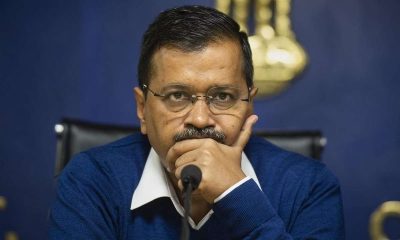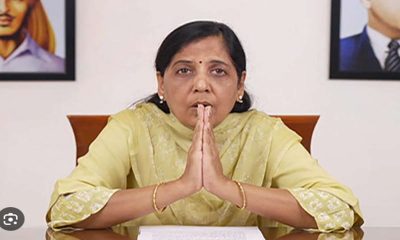Latest News
Delhi power demand breaks all records, residential air-conditioner use main reason: CSE
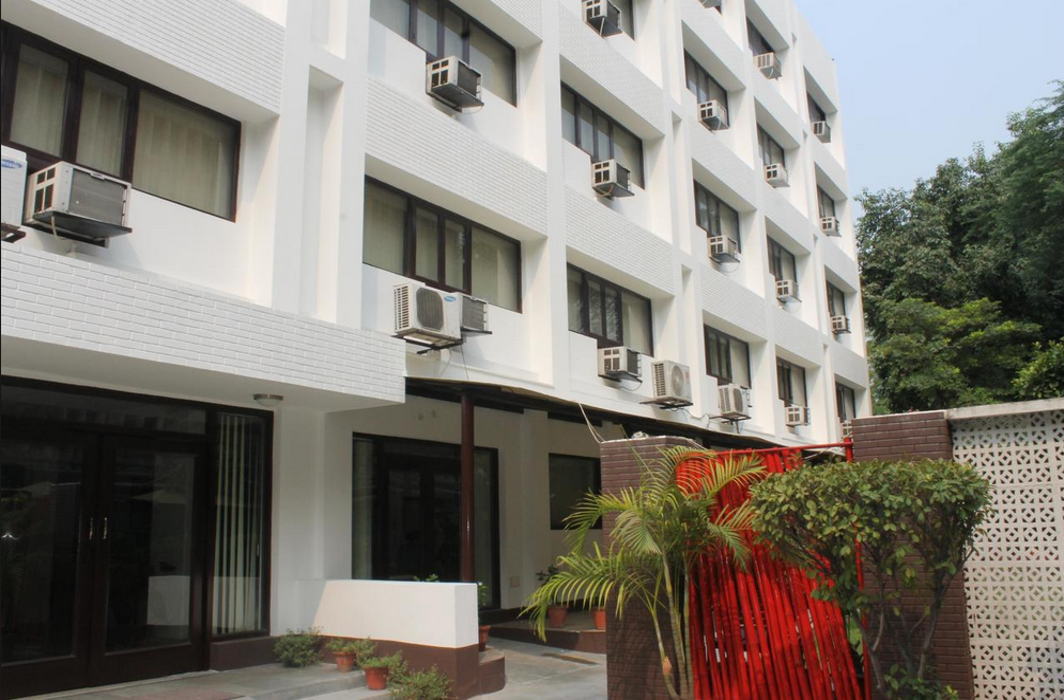
Delhi’s power demand this summer is breaking all previous records – it broke the previous record of June 6, 2017 four times since June 1 and hit an all time high of 6,934 megawatt (MW) last Friday, June 8 at 3:28PM, said Centre for Science and Environment (CSE).
What is more, Delhi’s peak demand has been consistently higher than that of Mumbai, Kolkata and Chennai taken together during this time of the year, the CSE said.
The CSE analysis released on Tuesday, June 12, said the demand has reached such levels when this is not the hottest day of the season so far. The earlier record of 6,526 MW was set on June 6, 2017 which was a hotter day than June 8, 2018.
The CSE links the huge demand for electricity in Delhi to subsidised electricity, rising ambient temperature, growing use of air conditioners (AC) and inadequate central regulations for energy performance of ACs.
Anumita Roychowdhury, executive director, research and advocacy, CSE, said: “Without any pricing or energy efficiency measures to reduce the demand for electricity or substantial substitution with renewable energy, environmental and economic costs can escalate significantly.”
The growing demand for electricity and peak demand in the city is influenced not only by the commercial use of electricity, but also by growing use of energy-intensive appliances for cooling in the household sector, she said.
“Cheap electricity, rising incomes, and badly designed buildings that trap heat, are inducing demand for energy-intensive active cooling practices and systems upsetting the energy demand of the city,” she added.
According to the newly released report of the Central Electricity Authority on Load Generation Balance Report 2017-18, Delhi is consuming more electricity than states like Himachal Pradesh, Jammu & Kashmir, Uttarakhand, Chhattisgarh, Goa, Kerala, Bihar, Jharkhand, Odisha, Sikkim and all states of the North-east.
Delhi’s residential energy consumption is even more shocking. The total energy consumed by Delhi households is more than that of all households in Gujarat, one of the richest states, with a population about three times that of Delhi. Already in Delhi, the household electricity consumption per capita is about 43 units per month as against national average of 25 units per month.
According to an estimate by the Bureau of Energy Efficiency (BEE), ACs contribute almost 60 per cent of the Delhi’s peak electricity demand.
According to the IEA report, India is to see a 15-fold jump in demand for power for space cooling by 2050.
CSE analysis: The key highlights
Rapid increase in electricity demand: Electricity consumption in Delhi has grown by almost 42% between 2006-07 and 2017-18 and peak demand has grown by staggering 64% in this period.
On an average, an electrified household in Delhi matched the electricity consumption of an average German household: it consumed about 260 kiloWatt-hour (kWh) of electricity monthly in 2016-17 – almost three times the national figure of 90 kWh.
Residential cooling demand increases night-time peak demand: This summer, on several days, demand has peaked during night – recording higher levels than the day time demand.
This is the starkest evidence of the powerful impact of residential use of ACs on electricity demand since it has happened even when all commercial uses including offices, retail and education institutions are closed at night.
During the month of May, for as many as 21 days, late night peak demand has been higher — up from 14 days in 2016.
A typical summer day in Delhi has two peaks, one during the day (driven by commercial activities) and other around midnight (driven by residential sector). On an average, these two peaks have become almost identical now. The average day peak during the period May 1-May 31, 2018, was 5,280 MW daily during afternoon (between 3.00-4.00 PM); the average daily night peak was 5,256 MW (11.00 PM-midnight) – a small difference of merely 0.5 per cent.
Weekdays vs weekends: The impact of residential demand for electricity is so substantial that the average electricity demand on weekends is just 4 per cent lower than the demand on weekdays. This slight difference is caused mostly by about 8 per cent drop in demand during the day time, while the night demand remains the same.
In the early 2010s, day peak during the weekend used to be higher than the night peaks; but last year, almost 95 per cent of the weekend night peak was higher.
Drastic decline in electricity demand after dust storm and temperature drop proves high impact of ACs on electricity demand: Interestingly, the link between ambient temperature, use of ACs and electricity demand is directly evident from the days of the storms and squalls in Delhi when temperature drops temporarily. For instance, on June 9, when a thunderstorm brought down ambient temperature from 34 C to 24 C between 5:00-5:30 PM, the peak demand for electricity fell from 5,600 MW to 3,323 MW (a 41 per cent drop). This shows the impact of cooling requirement on Delhi’s peak energy demand.
Electricity subsidy inciting energy-intensive cooling: The Delhi Electricity Regulatory Commission (DERC) has slashed electricity rates for domestic consumers by 12-25 per cent across all consumption slabs this year.
The new tariff is among the lowest in the country — but the Delhi government makes it even cheaper by providing a 66 per cent subsidy on the rate for households that consume less than 400 units a month and an additional rebate of Rs 100 on the fixed charge to households that consume less than 100 units a month. The effective electricity rate in Delhi is Rs 1/unit for the first 200 units, and Rs 1.5 for the next 200 units – total of 400 subsidised units offered by the Delhi government.
Delhi government data shows that the subsidy was availed by 82 per cent of homes last year – which means even higher income households are benefitting from the subsidy and the low rates, since there is no mandate for energy audits or compulsory disclosure of annual energy consumption.
Moreover, Delhi does not impose any penalty for over-consumption
India’s energy efficiency standards for ACs lagging behind global best practices: Between 2013 and 2018, India produced over 26.5 million AC units, of which about 60 per cent were 3-star. A recently released report, “The Future of Cooling” by the International Energy Agency, notes that when it comes to energy efficiency of ACs, India has the worst market average of measure of energy efficiency (3.2 Seasonal Energy Efficiency Ratio) compared to major economies like the US, Europe, Canada, China, Japan, Korea, and Singapore.
It also notes that the best AC (6.2 Seasonal Energy Efficiency Ratio) available in India is subpar compared to the global best practice. In other economies, the SEER varies from 11 in Europe; 7.7 in Japan; 9.7 in South Korea; 7.5 in China; and 12.3 in USA.
Weak energy efficiency standard of ACs worsens energy impacts: Energy performance of an air conditioning system depends on the outdoor weather conditions and indoor temperature settings. A 2016 study by CSE had found an average 20% increase in energy consumption of a 5-star split AC compared to its labeling when outdoor temperatures hit 45 C. The cooling capacity also dropped by 13-15 percent.
Need energy-efficient buildings: The intensity and duration of AC use can be reduced substantially if buildings are designed more sensibly to reduce heat gain. Summer heat is being trapped by climate-insensitive construction and a highly concretised urban-scape.
Inappropriate architectural design and material used in the hot and dry climate of Delhi — such as glass-dominant structures, predominant use of concrete, and use of large windows and flat concrete roofs without shading — traps a lot of heat. Even though the nights are cooler, buildings cannot release heat effectively, and hence require active cooling.
Latest News
Dust storm, light rain expected in Delhi-NCR today, heatwave conditions to abate
IMD claimed in a tweet that Thunderstorm dust with light to moderate intensity rain and gusty winds with speed of 30-50 km/hr would occur over and adjoining areas of many places of Delhi, North Delhi, North East Delhi, North west Delhi, West Delhi, Central Delhi, East delhi and NCR( Loni Dehat, Hindon AF station, Ghaziabad, Indrapuram, Chapraula) Sonipat, Rohtak, Kharkhoda (Haryana) Baraut, Bagpat, Meerut, Khekra, Modinagar, Kithor , Garhmukhteshwar, Pilakhua, Hapur ,Gulaoti ,Siyana ,Sikandrabad , Bulandshahr , Jahangirabad (UP)
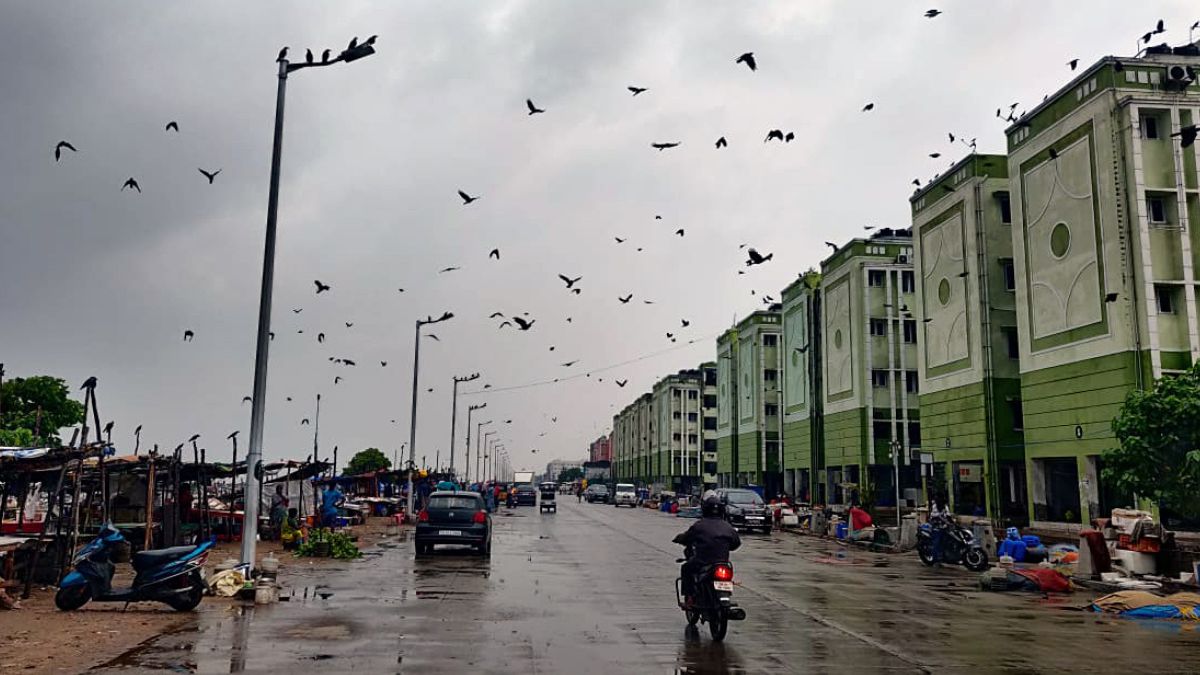
On Wednesday, a dust storm with light to moderate rain is expected in numerous locations in Delhi and the National Capital Region (NCR). The India Meteorogical Department (IMD) stated the city’s maximum and minimum temperatures are predicted to be in the range of 40 and 25, respectively.
The IMD tweeted an advisory that thunderstorms, dust with light to moderate intensity rain and gusty winds with speed of 30-50 km/hr would occur over and adjoining areas of many places of Delhi, North Delhi, North East Delhi, North West Delhi, West Delhi, Central Delhi, East Delhi and NCR (Loni Dehat, Hindon AF station, Ghaziabad, Indirapuram, Chapraula) Sonipat, Rohtak, Kharkhoda (Haryana), Baraut, Bagpat, Meerut, Khekra, Modinagar, Kithor, Garhmukhteshwar, Pilakhua, Hapur, Gulaoti, Siyana, Sikandrabad, Bulandshahr, Jahangirabad (UP).
For the next two hours, light to moderate intermittent rain is expected over and near Adampur, Hissar, Hansi, and Meham (Haryana).
Read Also: Will ensure executive doesn’t turn blind eye: Supreme Court on Manipur violence
On Thursday, May 18, light rain is predicted for in Delhi based on the seven-day prediction for the city. The sky will mainly be cloudy, with the potential of a light rain or drizzle, according to the weather office.
The air quality will continue to be deteriorated in the city after strong winds with dust swept across the Delhi-NCR on Tuesday. Following this, visibility had reduced to 1000 metres. Kuldeep Srivastava, the head of regional forecasting centre, said the dry atmosphere is one of the reasons for the dust storms.
Following Tuesday’s severe winds and dust storm that blasted across the Delhi-NCR, the city’s air quality had taken an alarming dip.
The monsoons, which are awaited across India, are likely to make landfall in Kerala on June 4. Usually, the monsoon arrives on May 31 or June 1 but the delay will be made up as the phenomenon progresses on its south-west to north-east arc. With extreme temperatures right from a cold sytart to May to dust-laden winds in mid-May, the weather in the country is paying the price for accelerating climate change.
Siddaramaiah to be new Karnataka CM, DK Shivakumar his deputy: Report
Tamil Nadu woman’s near-fatal brush with car-borne chain snatchers | WATCH
Latest News
Security lapse at Navjot Singh Sidhu’s Patiala home, says it will not deter him from raising his voice against Punjab
After his release from jail, he slammed the ruling Aam Aadmi Party (AAP) government for its law and order in the state.

Congress leader Navjot Singh Sidhu has filed a complaint with the Punjab Police after he spotted a suspicious person wrapped in a grey blanket on his terrace. He alleged a security lapse at his Patiala home. He couldn’t catch him as he fled after his servant raised an alarm.
Taking to Twitter, Sidhu said, Today on the terrace of his residence an unknown suspicious character wrapped in a grey blanket was noticed around 7:00 pm, the moment his servant went out raised the alarm, and called for help, he immediately ran and escaped.
The 59-year-old further said that he has spoken to DGP Punjab Police and has also informed SSP Patiala. He said the security lapse will not deter him from raising his voice for Punjab.
Punjab Police registered a case in this matter. According to the reports, the Patiala Senior Superintendent of Police Varun Sharma visited his residence after the complaint and is currently investigating the matter. The CCTV footage of the area is also being scanned, reports state.
Cricketer-turned-politician came out of the Patiala Central Jail on April 1 after serving nearly 10 months in a 1988 road rage case. After his release from jail, he slammed the ruling Aam Aadmi Party (AAP) government for its law and order in the state.
He said Democracy is in chains. Punjab is the shield of this country. When dictatorship came in this country, a revolution also came, led by Rahul Gandhi.
Sidhu also slammed the Mann government over the pruning of security of slain singer Sidhu Moosewala and also making it public.
Former MLA and BJP leader Neeraja Reddy dies in road accident in Telangana
Latest News
Air India Delhi-San Francisco flight suffers tech glitch before take-off, returns to stand
The airline has not given any official statement in this matter.

Air India flight which was en route to San Francisco from Delhi on Monday had to be returned to the stand because of a technical glitch. The San Francisco-bound flight suffered a tech issue before take off.
According to the reports, the aircraft which was carrying over 200 passengers from Delhi’s Indira Gandhi International Airport (IGI) had to be replaced with another aircraft. Later, the passengers were accommodated in another aircraft.
The airline has not given any official statement in this matter.
Read Also: Clashes in Jharkhand’s Jamshedpur after Ram Navami flag desecrated, Section 144 imposed
Earlier today, another Air India incident occurred where a London-bound flight returned to Delhi’s IGI airport after a mid-air brawl between an unruly passenger and the flight’s cabin crew.
A brawl ensued between a passenger and the crew members shortly after it departed from the airport at around 6:35 am. The onboard ruckus forced the plane to turn around and return to Delhi again where the raucous passenger was deboarded and handed over to the police at the airport.
Air India apologized to the passengers on the affected Delhi-London flight for the delay and inconvenience caused to them due to the incident and assured them that efforts will be made to ensure such incidents do not occur in the future.
Clashes in Jharkhand’s Jamshedpur after Ram Navami flag desecrated, Section 144 imposed
Paan shop owner’s daughter cracks Uttar Pradesh civil services exam, appointed Gonda SDM
-
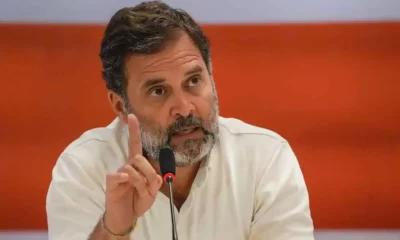
 2024 Lok Sabha Elections13 hours ago
2024 Lok Sabha Elections13 hours agoRahul Gandhi clarifies on wealth survey remark, says aim is to identify injustice
-

 Cricket news14 hours ago
Cricket news14 hours agoIPL 2024: Marcus Stoinis hits first IPL century as Lucknow Super Giants beat Chennai Super Kings by 6 wickets
-
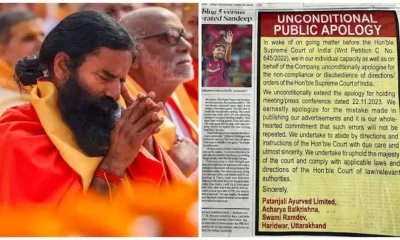
 India News12 hours ago
India News12 hours agoRamdev, Balkrishna publish bigger apology in newspapers after Supreme Court’s rap
-

 Trending10 hours ago
Trending10 hours agoA waiter’s life: Social media users go emotional on watching viral video
-
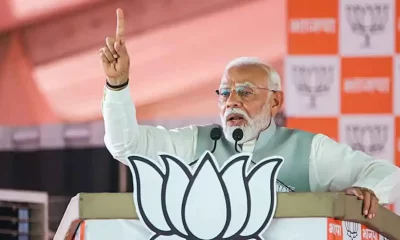
 2024 Lok Sabha Elections9 hours ago
2024 Lok Sabha Elections9 hours agoPM Narendra Modi slams Congress over Sam Pitroda’s inheritance tax remarks, accuses Congress of intending to impose higher taxes
-

 2024 Lok Sabha Elections7 hours ago
2024 Lok Sabha Elections7 hours agoNitin Gadkari says he’s better now after collapsing at election rally in Maharashtra’s Yavatmal
-
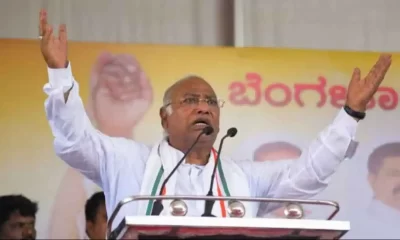
 2024 Lok Sabha Elections6 hours ago
2024 Lok Sabha Elections6 hours agoMallikarjun Kharge vows to continue politics till his last breath to defeat BJP
-

 Entertainment8 hours ago
Entertainment8 hours agoMadhuri Dixit, Karisma Kapoor recreate Dil To Pagal Hai dance battle on Dance Deewane



